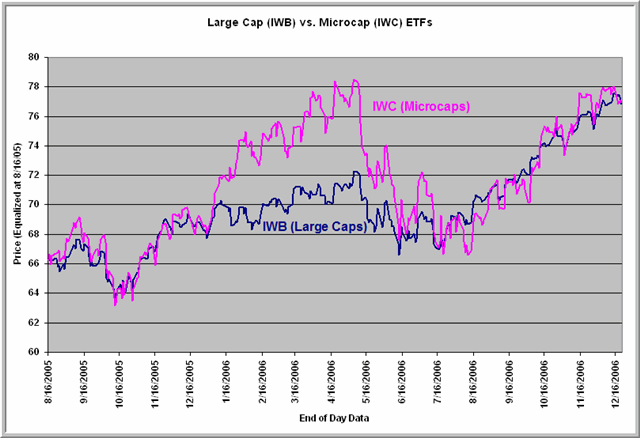The Largest and Smallest ETFs_1
Post on: 15 Июль, 2015 No Comment

Investing in the smallest funds carries risks not associated with the giants. To wit: Will my ETF shut down?
Ari I. Weinberg
Updated Sept. 5, 2012 12:01 a.m. ET
The world of exchange-traded funds is notoriously top-heavy, and that has implications for investors in both the largest and smallest ETFs.
Just one fund, SPDR S&P 500. holds 8.5% of the assets in all U.S.-listed ETFs, with $104 billion as of Aug. 15, according to research firm XTF. This mammoth ETF accounts for one-third of the dollar-weighted average daily trading volume of these products. And taken with the 21 other ETFs that have amassed assets of more than $10 billion each, this exclusive group accounted for nearly half of the assets in U.S.-based ETFs as of mid-August.
The size and trading activity of these giant funds make the funds easy to buy and sell, even in large quantities, at prices that tightly track the value of the underlying securities. Also crucial to large ETFs are highly liquid markets for the underlying securities held by the funds.
The Big Three
At the very top of the pile, meanwhile, only three companies control 80% of the U.S. ETF market, according to XTF. BlackRock Inc. ‘s iShares unit manages 12 of the 22 ETFs with more than $10 billion each. The fastest-growing among the large-fund families, Vanguard Group, holds five spots, including the third-largest fund, Vanguard MSCI Emerging Markets. And State Street Corp. claims Nos. 1 and 2, with two innovative, first-to-market products: the SPDR S&P 500 (introduced in 1993) and SPDR Gold Trust (in 2004).
The only firm outside the Big Three that has a fund with more than $10 billion in assets is Invesco Ltd. ‘s Invesco PowerShares: Launched in 1999, PowerShares QQQ tracks the Nasdaq-100 index. The fund represents one of the first and most successful ETFs built on a then-emerging investing trend—technology companies.
So much for the big boys. At the other end of the spectrum, there were recently 929 ETFs with less than $100 million in assets each. Together, these funds account for just $20 billion, or 1.7%, of the $1.2 trillion in assets held—even though they represent 62% of the industry in sheer numbers of funds.
Some investors in very small ETFs can get burned by wide trading spreads and low liquidity. Another pitfall is that many of the tiny funds aren’t profitable for their management companies—and thus are candidates to be closed, particularly if they aren’t part of large, successful families.
Closing Time
In August, Russell Investments announced plans to close all but one of its 26 ETFs, after collecting more than $300 million in assets in less than two years in business.
FocusShares, a unit of the online brokerage company Scottrade Inc. has called it quits on its entire franchise of low-cost index and sector funds benchmarked to Morningstar Inc. indexes. The company closed 15 funds that had collectively attracted a little less than $100 million in assets in just over a year of business. (A previous incarnation of FocusShares, pitching four highly stylized trend-investing ETFs, closed those funds in 2008.)
Investors get their money back when a fund closes, of course. But such closures can foul up investors’ tax planning and portfolio allocations.
What’s in store next for ETF investors? Asset managers are tiptoeing around actively managed ETFs, but only a few firms offering bond and currency strategies have had success attracting investors to that market so far.
Mr. Weinberg is a writer in














